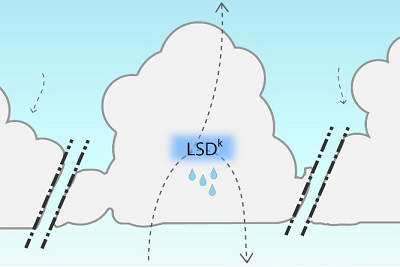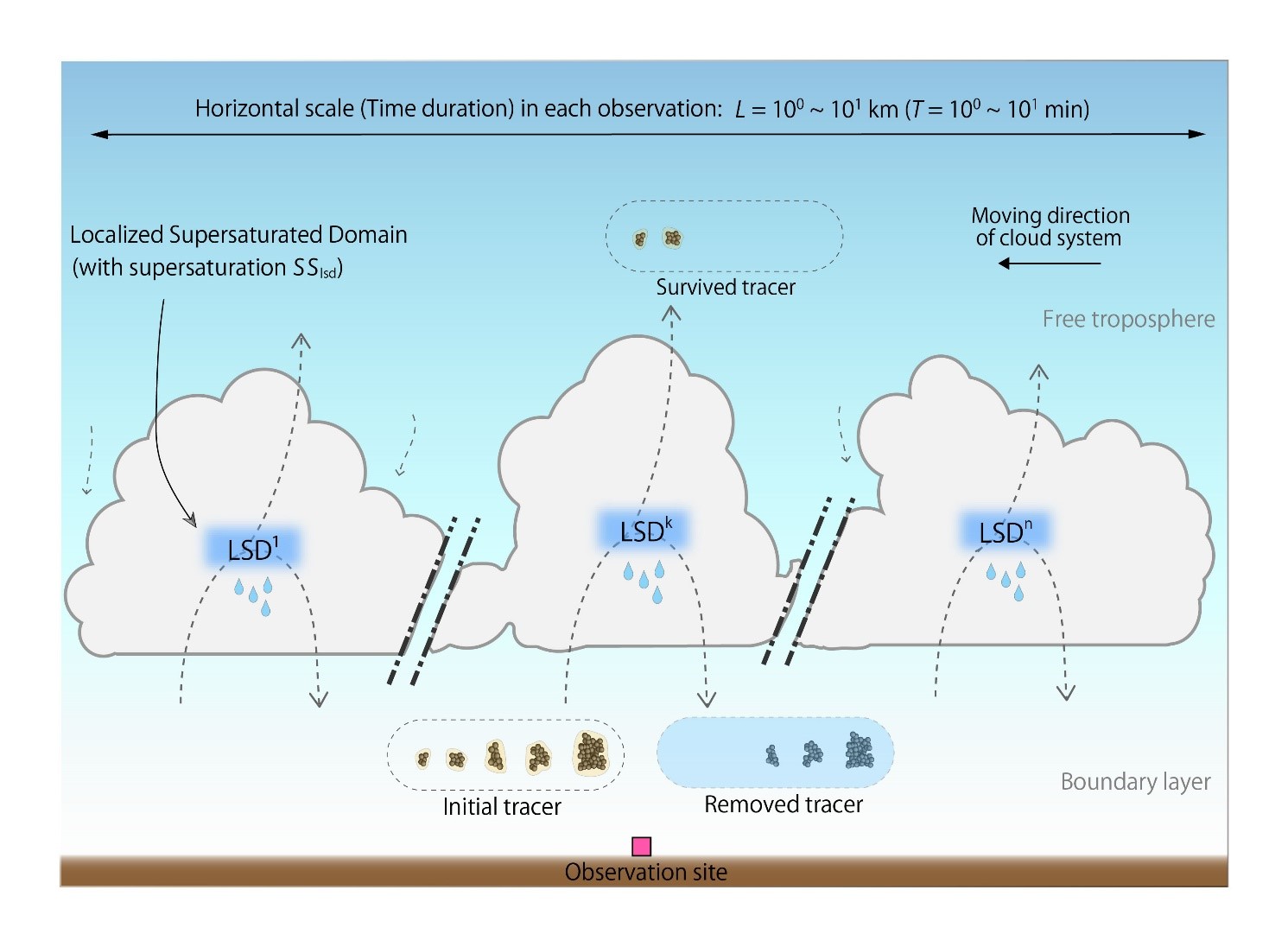Measuring cloud supersaturation improves the model predictability of atmospheric aerosols


The mass-equivalent diameter of each water-insoluble black carbon particle is an observable invariant during the removal and transport processes. For simplicity, the figure illustrates a temporal snapshot of the spatial distribution of discrete localized supersaturated domains.
© 2019 Nobuhiro Moteki.
Experts who study tiny, airborne particles in the atmosphere have discovered a new parameter that should improve climate models. The parameter, identified as supersaturation of water vapor inside rain clouds, was revealed by a team of researchers including Assistant Professor Nobuhiro Moteki of the University of Tokyo Graduate School of Science.
"Water vapor supersaturation in rain clouds is a key physical parameter for understanding atmospheric abundance of aerosols (fine solid and liquid particles suspended in a gas), which are one of the major sources of the uncertainty in current models of the atmosphere used to predict future climate. We developed a method to observe water vapor supersaturation to reduce this uncertainty," said Moteki.
Dust, pollutants, or other small particles float through the air and although they are tiny individually, together they can affect global climate. The concentration of water vapor in rain clouds regulates how often those particles are "washed" out of the sky.
The research team designed the new observational method for estimating supersaturation in rain clouds using water-insoluble black carbon (soot) as a tool to trace particles. This method provides an estimate of the supersaturation value actually experienced by the removed aerosols at the time of their activation to droplets, averaged over the localized supersaturated domains distributed over a particular atmospheric domain.
The researchers demonstrated the importance of the observational data of supersaturation of water vapor parameters based on sensitivity calculations using a numerical model of the atmosphere for studying the global climate.
Collaborators from the Tokyo University of Science and Nagoya University contributed to the research.
Papers
Nobuhiro Moteki, Tatsuhiro Mori, Hitoshi Matsui, and Sho Ohata., "Observational constraint of in-cloud supersaturation for simulations of aerosol rainout in atmospheric models.," npj Climate and Atmospheric Science. : February 8, 2019, doi:10.1038/s41612-019-0063-y.
Link (Publication )
)
Related links
- Graduate School of Science

- Department of Earth and Planetary Science, Graduate School of Science

- Moteki Laboratory website






